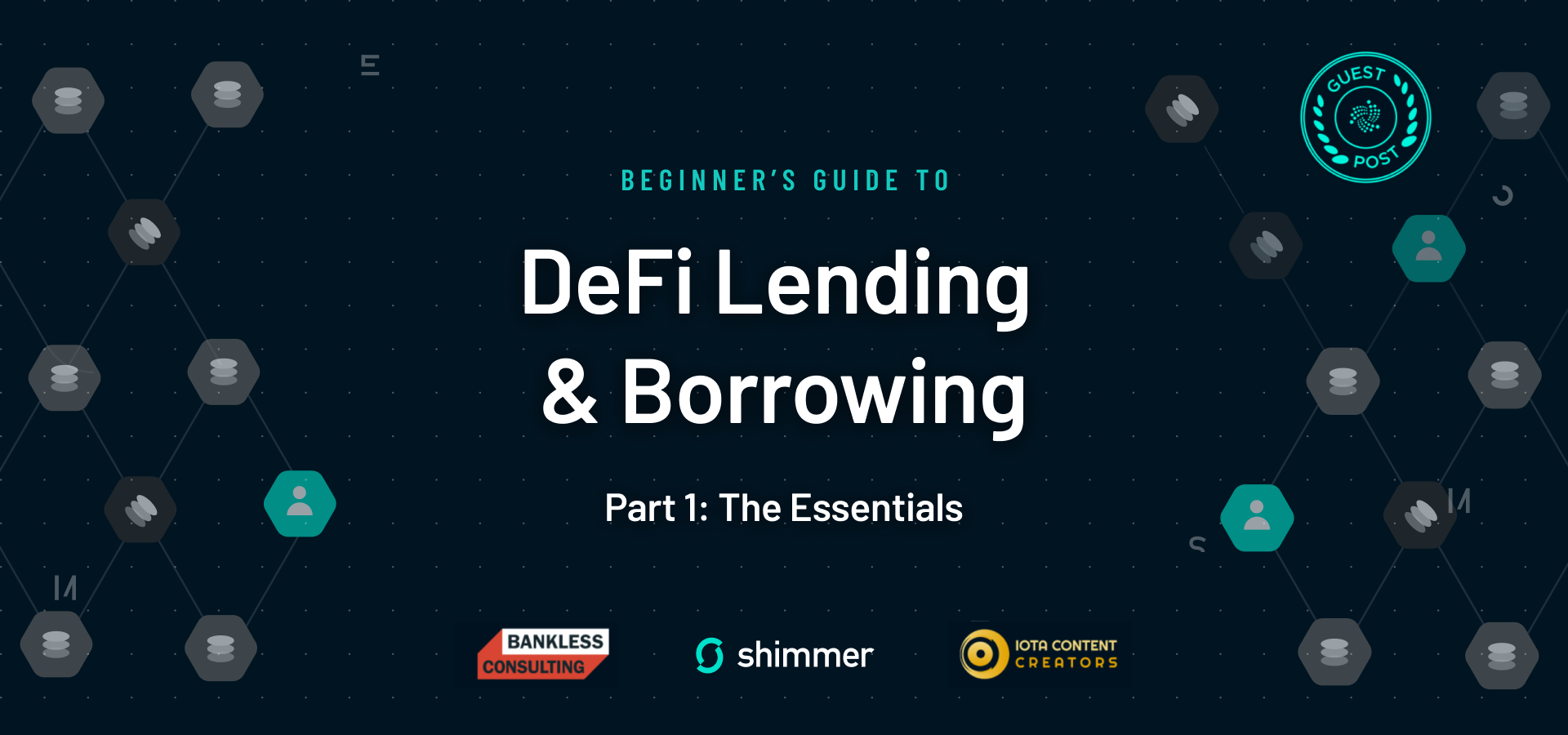The Essentials

TL;DR:
This three-part blog post is an introduction to decentralized finance (DeFi) lending and borrowing. Part 1 discusses the basics, Part 2 compares the advantages and disadvantages of DeFi borrowing and lending, while Part 3 looks at the role of oracles and different DeFi platforms, each of which offers a unique approach to lending and borrowing.
Lending and borrowing are the foundational components of financial markets. By lending assets, financial resources are offered to those in need, such as businesses, entrepreneurs, and individuals. Borrowers can then put these assets to work by starting businesses, financing projects, or utilizing the funds for personal obligations or investments. This enables capital to flow from savers and investors to those who need it, promoting economic growth and development.
In traditional financial (TradFi) markets, you offer your money to a bank and they pay you a minimal interest rate. In many cases, you have the freedom to withdraw your capital whenever you like. Borrowers can then borrow those funds from the bank by agreeing to pay it back with interest later. Borrowers can use the capital to pay for things like university fees, car loans, and mortgages, while the lending vehicles include certificates of deposit, treasury bills, and repurchase agreements (repos). Consider a product like a mortgage: a borrower takes out a 30-year loan at 4.5% interest, while the bank pays only 0.1% interest to depositors. The difference between these two rates is called the spread, which is how banks make money. They use your money, pay you interest, lend your funds out to others, and receive interest from those borrowers.
In Decentralized Finance (DeFi), there are still lenders and borrowers, but instead of going through a bank, DeFi uses code and smart contracts.
On the lending side, the protocol passively pays you interest, which can range from 2% to 20% depending on the protocol. On the borrowing side, there are significant differences to traditional markets. The most prominent of these is the collateralization ratio required of borrowers. The collateralization ratio is obtained by dividing the amount needed to secure the loan (collateral) by the total amount borrowed, expressed as a percentage. In TradFi markets, personal loans or credit cards are issued based on the borrower's creditworthiness and income. These are under-collateralized loans, with a collateralization ratio of less than 100%. Since there are no credit scores in crypto yet, and no way to do under-collateralized loans, you have to deposit more money than you’re borrowing: this is called over-collateralization. For example, if you have 100 US dollars worth of crypto tokens in a protocol, you might only be able to take out 60 US dollars against your loan. In this case, the collateralization ratio is over 100% at 167%. The collateralization ratio depends on the asset you’re posting and the protocol’s parameters, which are set by the protocols to protect themselves. This is one of the most critical aspects that sets DeFi apart from traditional finance.
Over-collateralization
You may wonder why you would want to put 100 US dollars into a protocol just to borrow 50 or 60 US dollars. There are several reasons for this:
1) Short-Term Liquidity: Someone may think that the value of a given token will increase by 5x in the next two years, but they might need cash now to pay their bills or deal with an emergency. In this case, they can post those tokens as collateral, borrow money against them, and still own the underlying tokens. As the value of the tokens increases, so does the value of their investment. So, the person can remain exposed to the underlying asset and still enjoy the price appreciation while covering their short-term liabilities.

2) Tax Protection: In the US for example, short-term capital gains taxes are 22%, so borrowing money against collateral may be cheaper than selling the assets. This strategy is commonly used by the ultra-wealthy who borrow against their collateral assets such as stocks and houses to fund their daily expenses.
3) Diversification: A person could borrow against their long-term holdings to buy something in the short term. They can then sell that asset, repay the loan, and have more assets across the board. For instance, suppose you see a short-term opportunity in the market: rather than selling some of your long-term holdings to participate, you could borrow against your position to take advantage of the opportunity in the short term.
4) Arbitrage Yield: Let’s assume that you could borrow stablecoins on one platform at 1% interest and lend them on another platform that pays 4% interest. In this case, you net 3% on your assets as a short-term investment.
5) The “Degenerate Play”: A person can use leverage to invest in more and more tokens. They borrow against their primary holdings, buy more tokens, lock up more tokens, and borrow more until they have no money left to borrow, essentially leveraging their assets by up to 9 to 10 times.
There are efforts underway to find alternatives to over-collateralization in DeFi. Some DeFi projects are exploring under-collateralized lending, while others are developing on-chain credit scores to determine the creditworthiness of borrowers. Another solution is social consensus, where borrowing and lending pools only let vetted members invite others into the pool.
The next part of this introduction looks at the advantages and disadvantages of DeFi lending and borrowing.
Introduction to DeFi Lending and Borrowing
Part 1: The Essentials
Part 2: DeFi Lending and Borrowing Pros and Cons
Part 3: Oracles and Platforms
Also in this series
Beginner's Guide to Crypto Wallets
 iota-news.com
iota-news.com